Liana Smale

Playing with Fire
Playing with Fire is a proposal for a playground space in the Nichols Arboretum that fosters exploration and connection to the natural environment for children through play. This system design is site-specific but can be taken and adapted to other sites. It contributes to the field of nature play, which is an accessible form of sustainable design; psychological and environmental health studies further support a focus on nature play over standard plastic playgrounds. Research suggests that playing outside as kids fosters pro-environmental behavior in adults, increases resilience to climate change, and strengthens social skills. This integration of environmental science, sociology, psychology, and design acknowledges the need for interdisciplinary work in the face of a climate crisis. Instead of viewing our response to climate change as a sacrifice, we can use the fact that we are nearing the end of many finite resources as an opportunity to think differently.This short, 2-minute video includes a look at my scale model, the swing I built and installed in my backyard, and the site for my playground proposal.
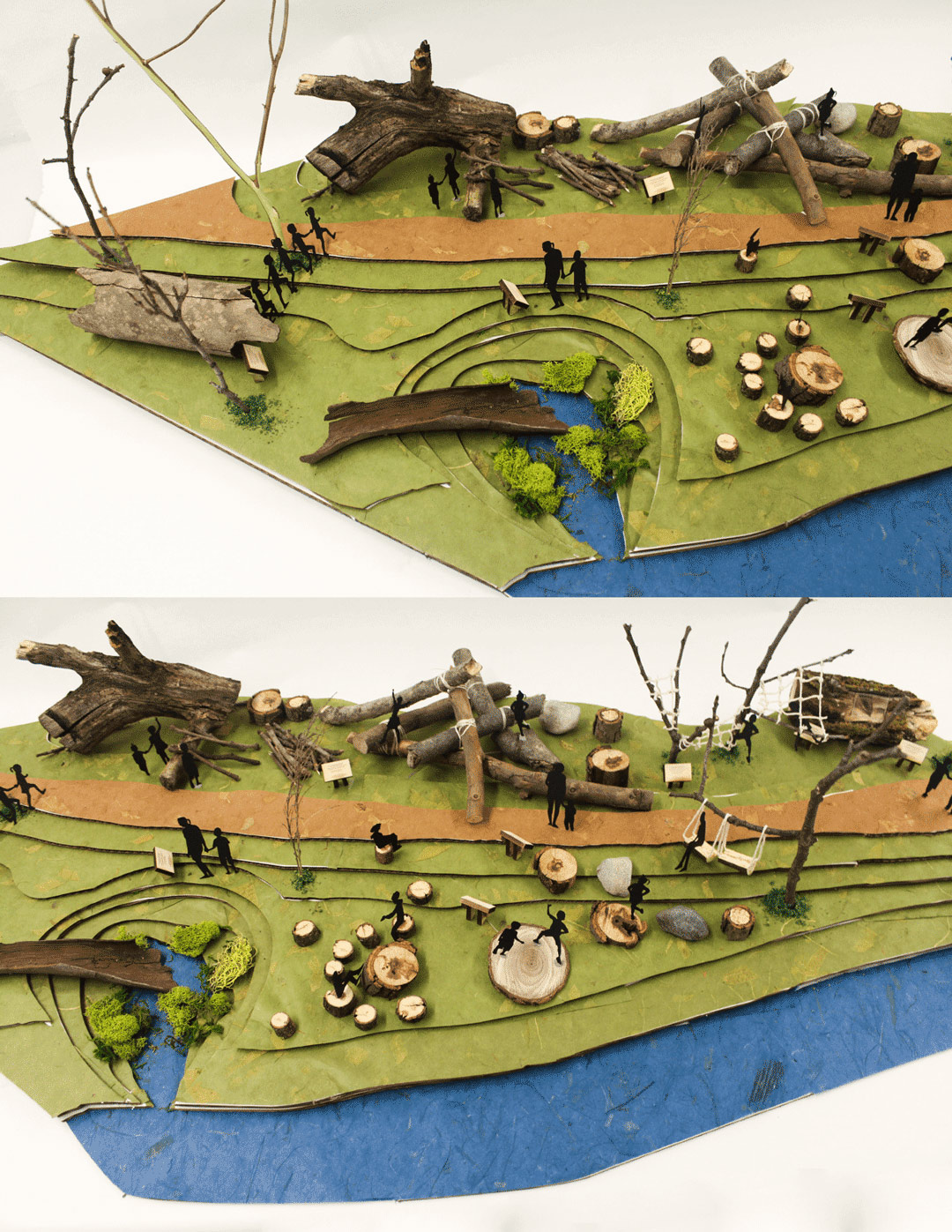
The base of the scale model was derived from a topographic map of the Arboretum. It is made from laser cut cardboard and Hollander’s colored paper embedded with leaves. The pieces are mainly made from sticks found in the Arboretum, and the entire model is recyclable/compostable.
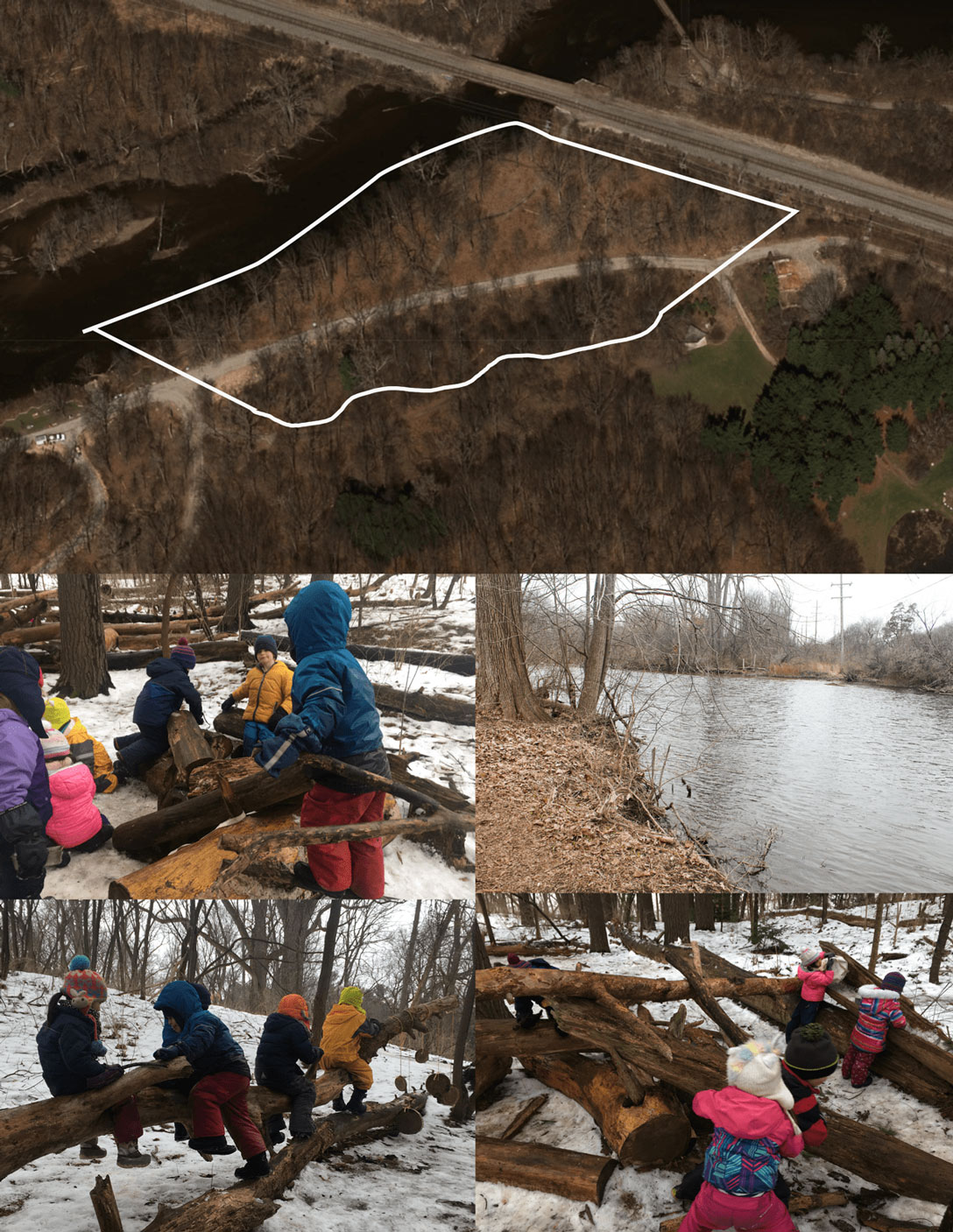
The top photo shows the site for my playground proposal in the Nichols Arboretum. I spent time playing with kids from the Towsley Children’s Center because they have a classroom that promotes nature play and spends most of its school days learning outdoors in the Arboretum.
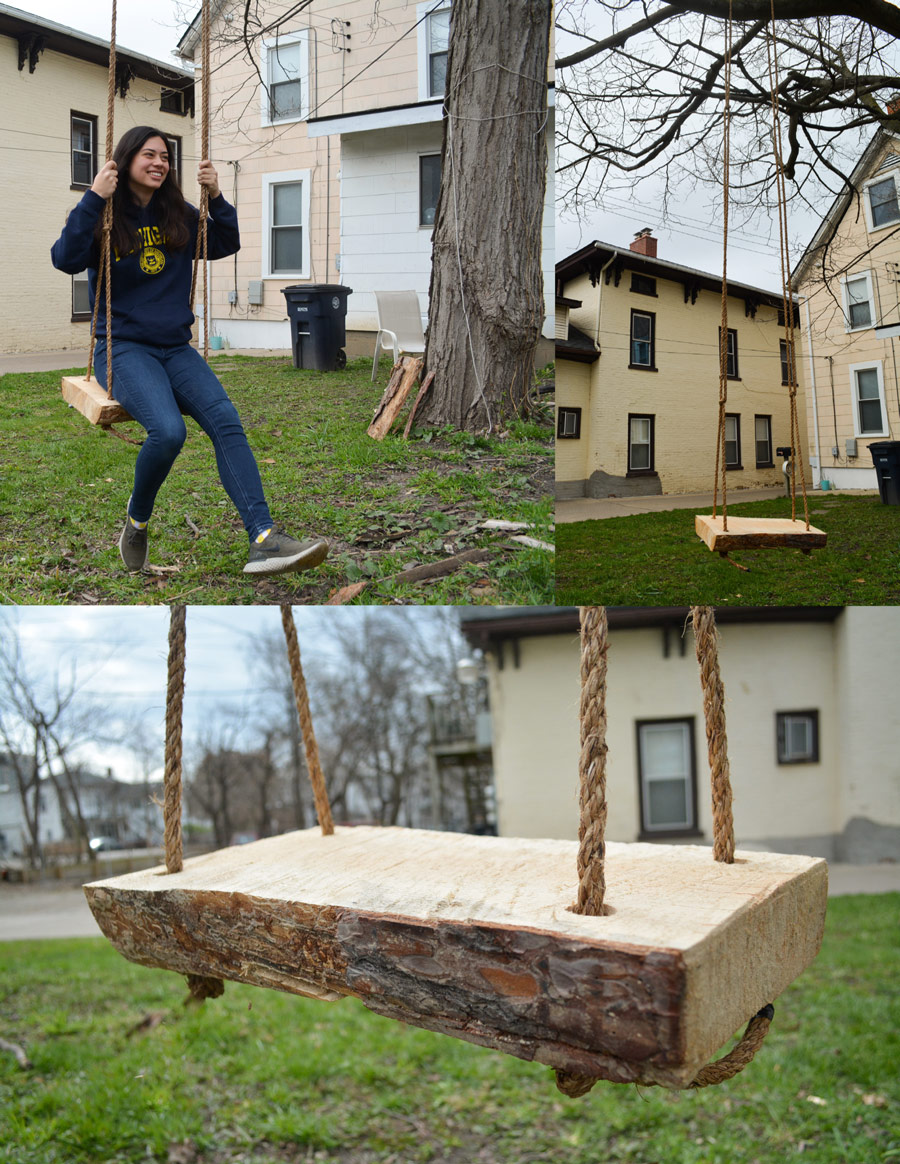
I had planned to make a full-size piece from my scale model to give to the Towsley kids, but because of the quarantine, I decide to install it in my backyard instead. My professor’s friend and arborist Kendall Babl helped me find this log, construct the swing, and install it on a tree branch.
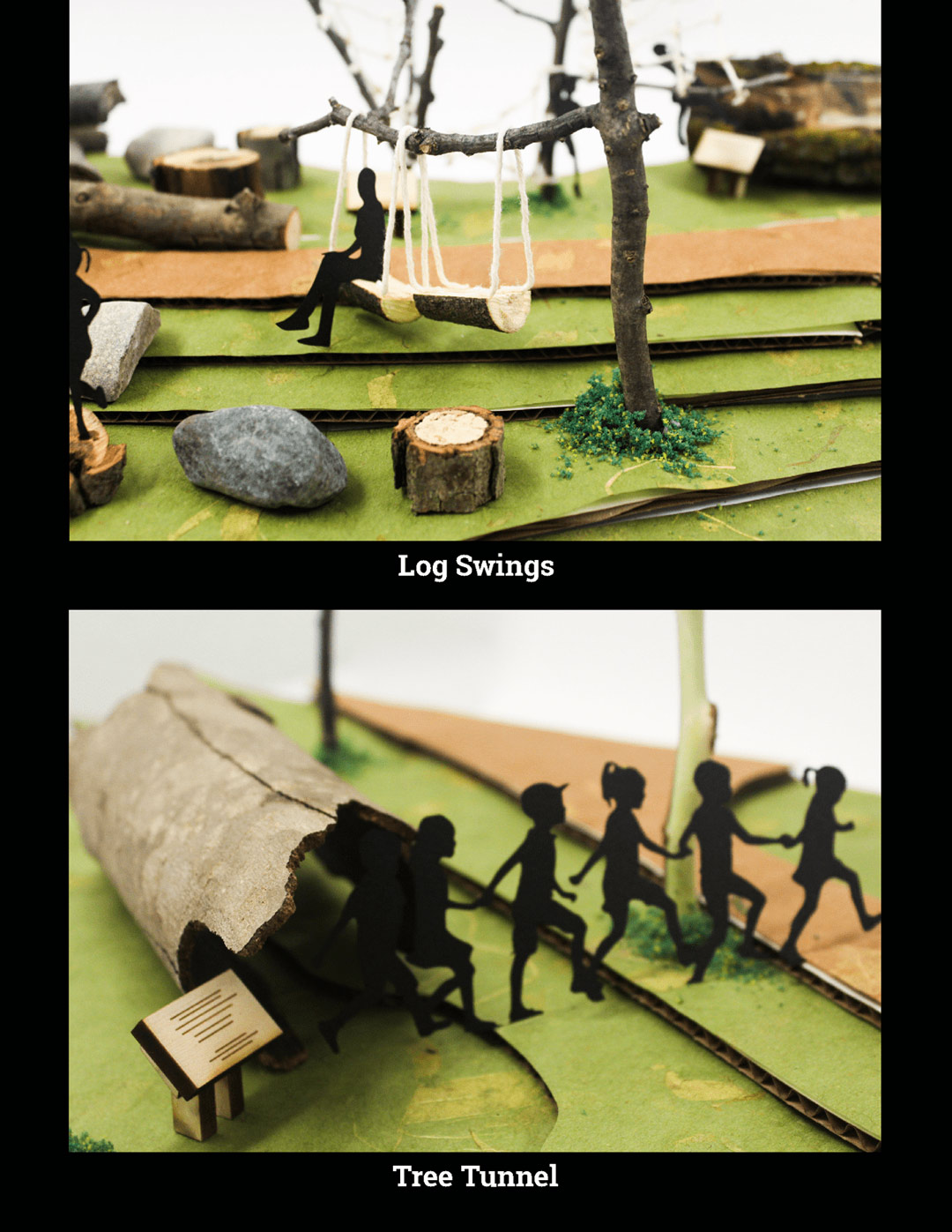
These close-up shots of my scale model show the log swings and the tree tunnel. The sign next to the tree tunnel, shown on a later page, prompts further engagement with the structure by giving information about ants that make tunnels underground.
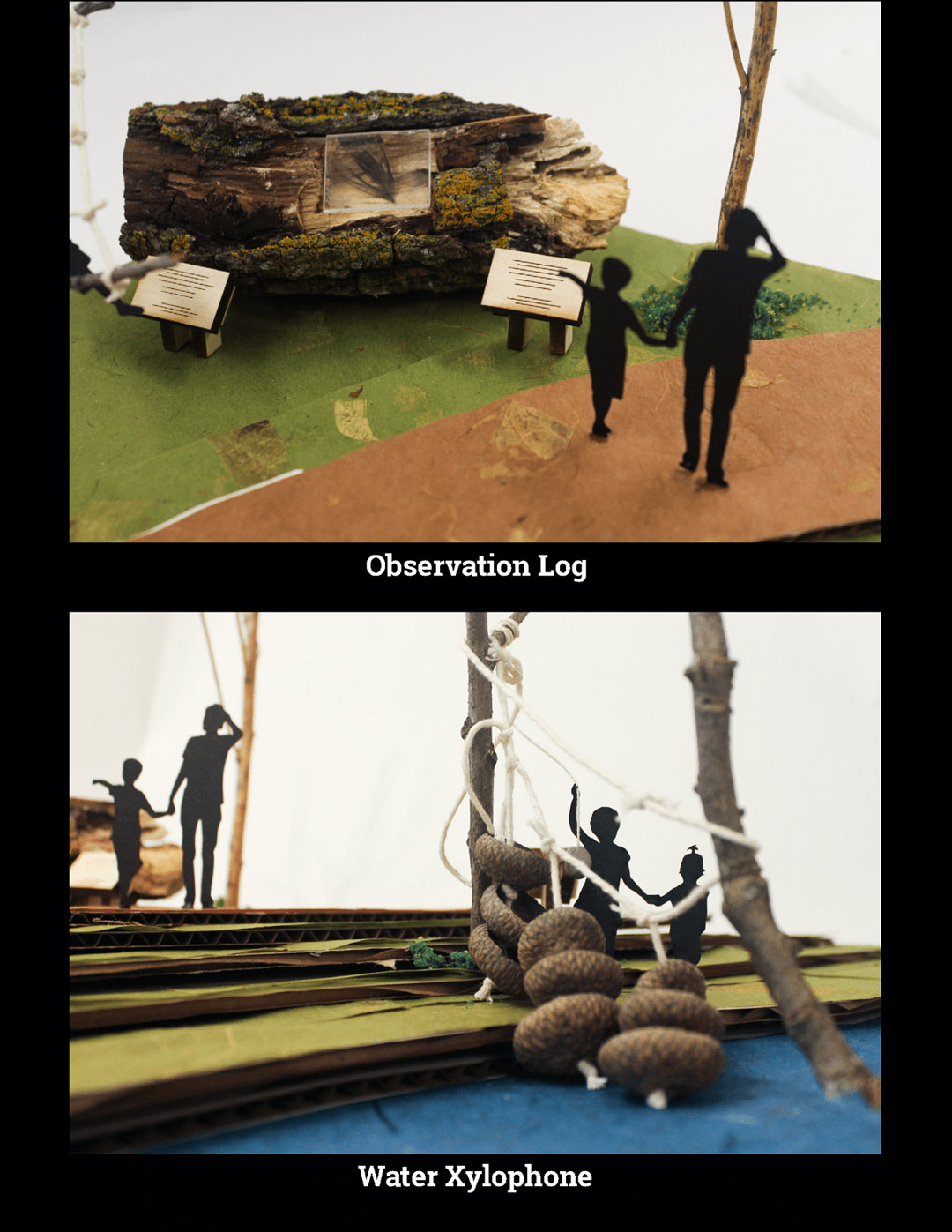
The observation log acts as an outdoor gallery in a fallen tree trunk. Feathers would be placed behind the glass, and the signs would ask the kids to guess which birds they think the feathers belong to. The acorns on the water xylophone represent gourds that you can use the rope to fill with water and hit with a mallet. The sign on a later page show how this instrument mimics the water cycle.
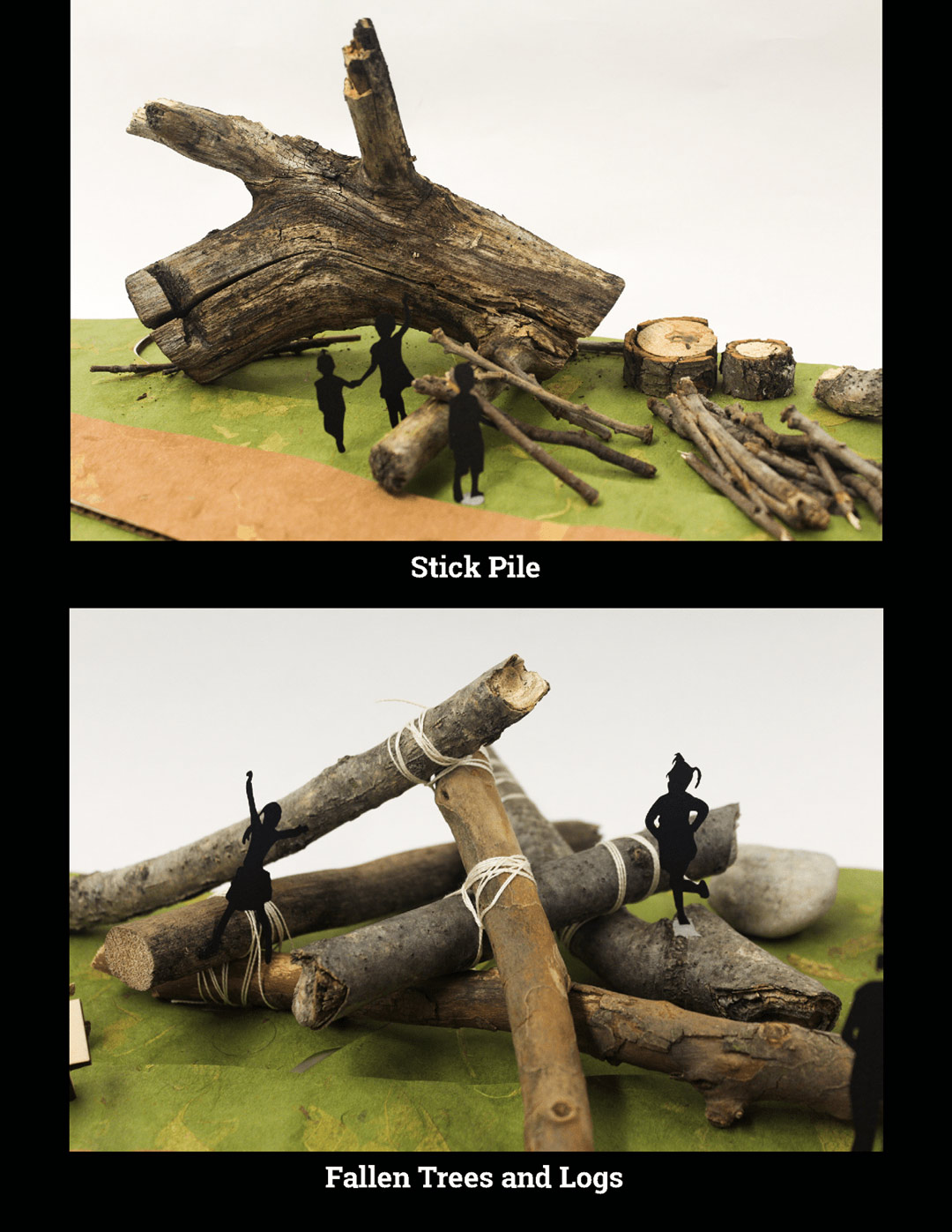
These two structures encourage climbing and building. The semi-permanent fallen tree structures are accompanied by a pile of sticks that are too large for one child to lift alone, prompting teamwork. The sign on a later page connects the stick pile to animals who build shelters.
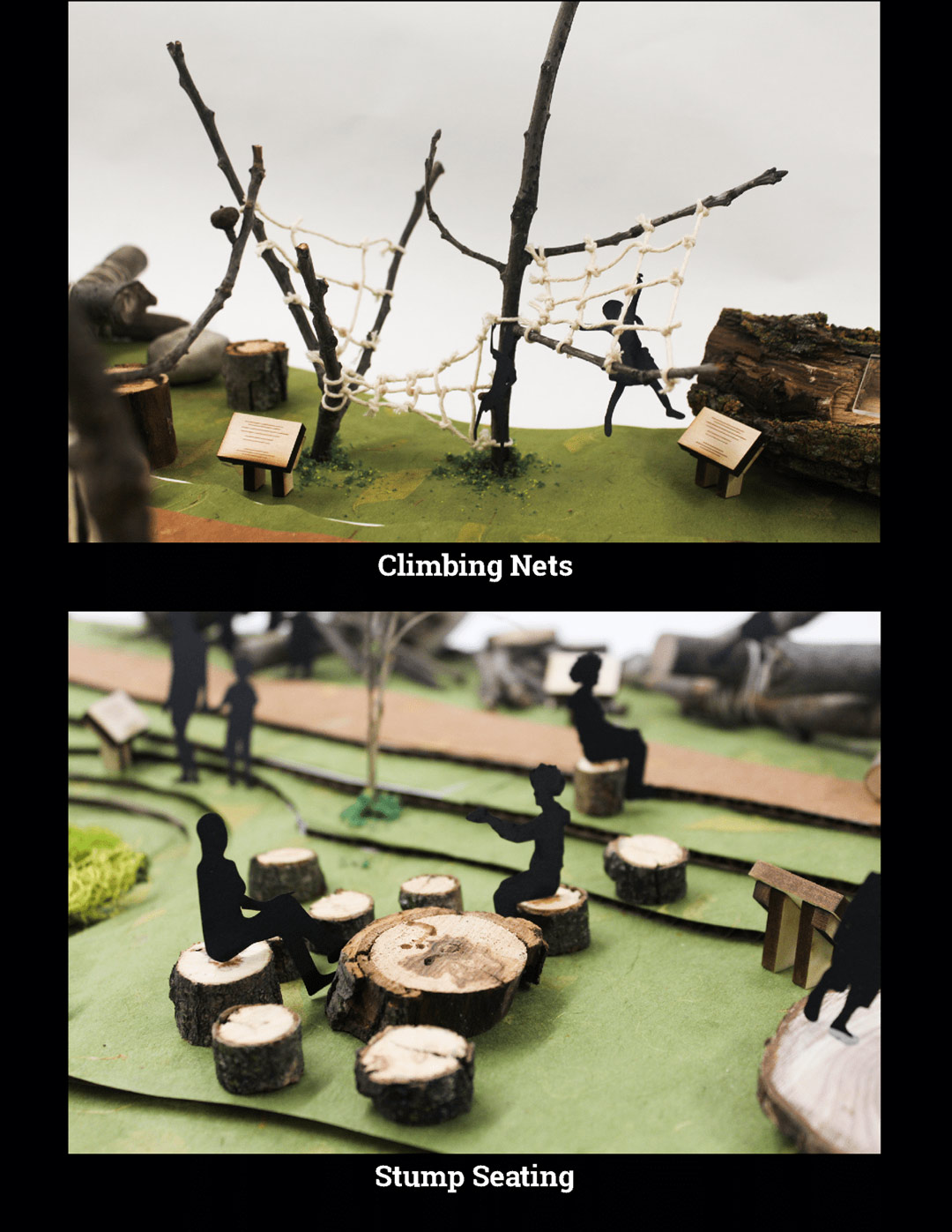
The sign on a later page discusses animals that climb next to the climbing nets. The stump seating contains a variety of stump heights to address the different stakeholders who use this area. Parents can move the stumps from their starting central location to watch their children from anywhere along the path.
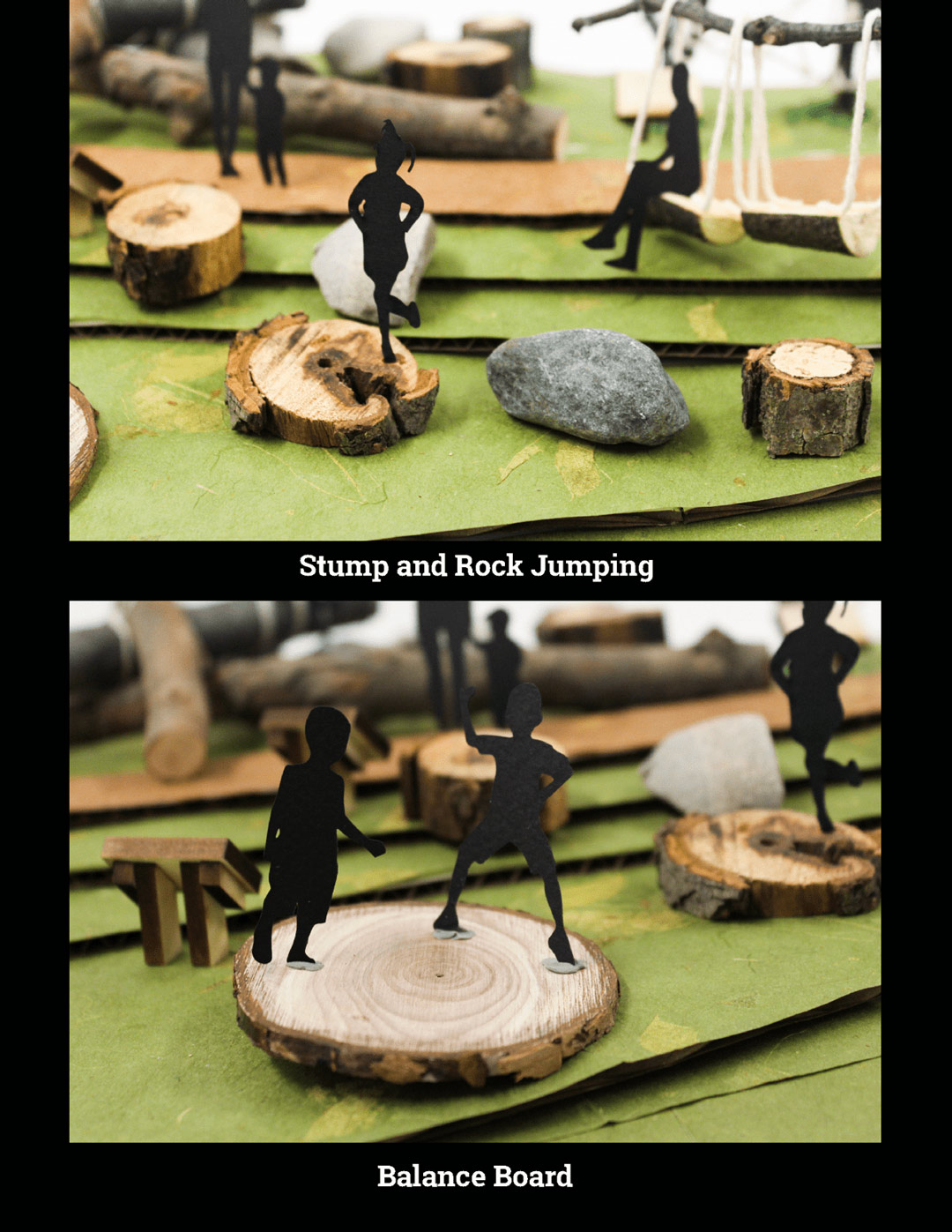
The sign on the next page describing animals that jump would be placed next to the stump and rock jumping area. The large balance board encourages teamwork, and the sign next to it discusses how wings help animals balance in the air.
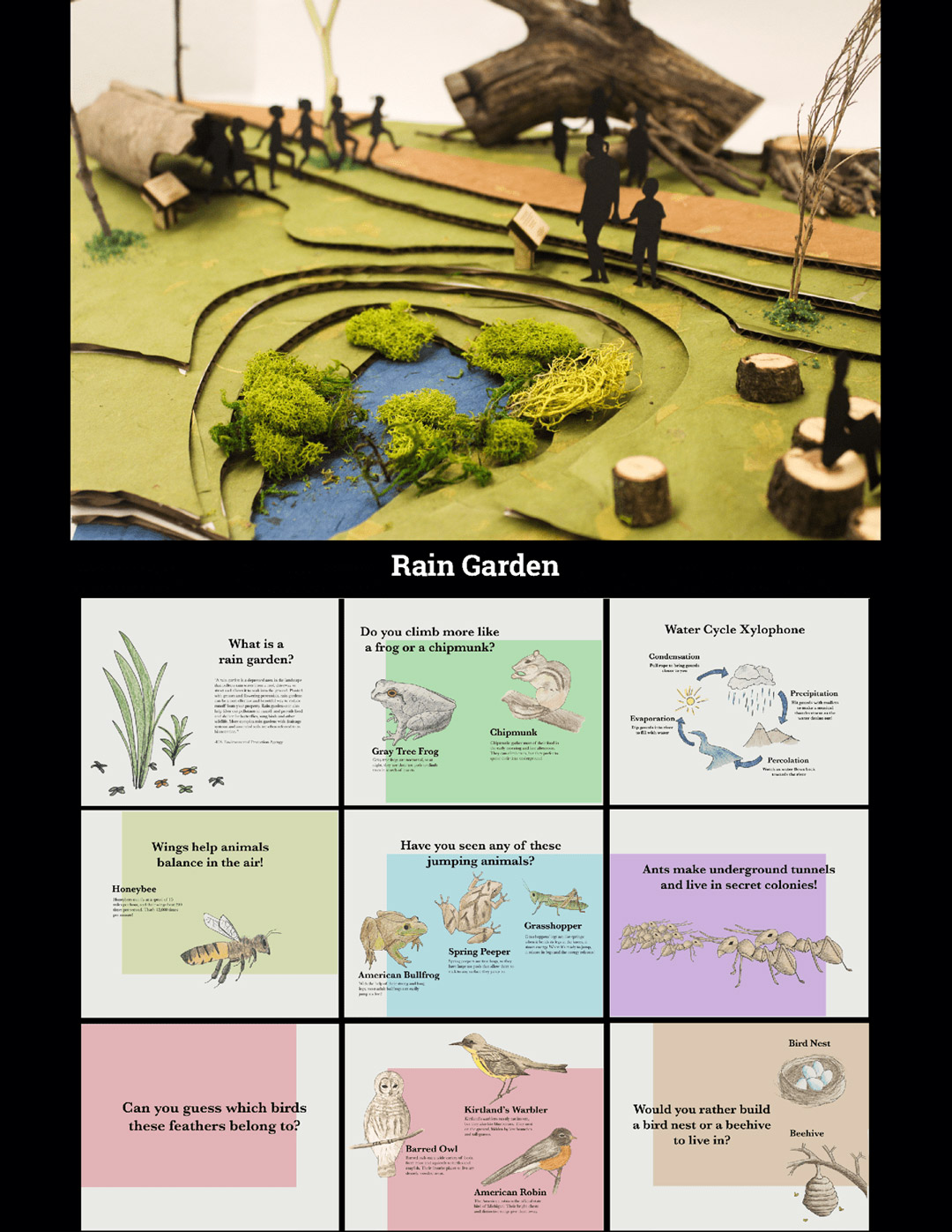
The rain garden is my only adjustment to the topography of this space, and it represents many other rain gardens that have been implemented in nearby sites. Kids could help maintain the garden of local plants that helps control flooding from rainfall. The signs did not fit well on the pages of the pieces they corresponded with, so they are compiled here, and you can see them in more detail on my personal design website. They are meant to prompt further engagement with the playground for children, not to give instruction or to overwhelm with information.
